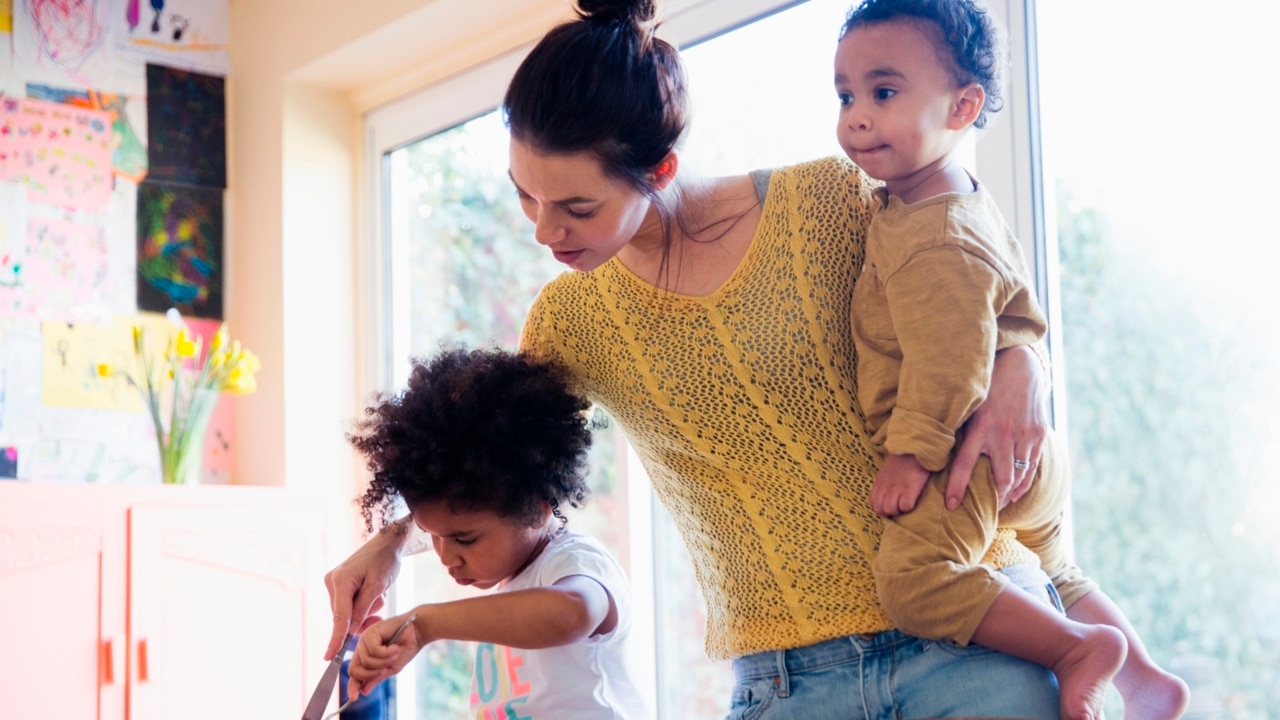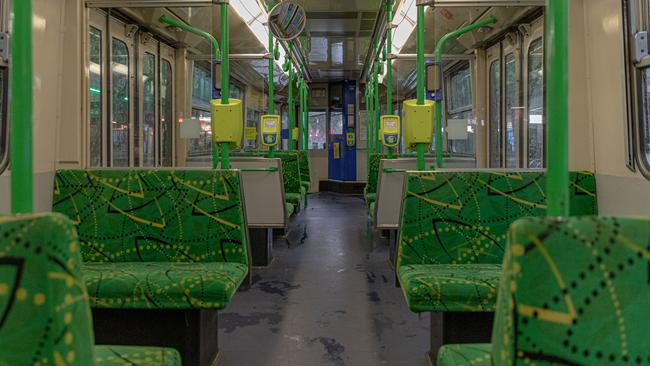What you’ll be allowed to do when restrictions are eased
Will we be allowed to go back to workplaces? When can we get back to the gym? How can we avoid another spike? Experts answer your questions on what we will and won’t be allowed to do once restrictions are slowly eased.

HS Coronavirus News
Don't miss out on the headlines from HS Coronavirus News. Followed categories will be added to My News.
Two top Australian health experts have predicted drive-in cinemas could make a comeback and workplaces will stagger start times, as coronavirus restrictions begin to ease.
Australian National University Professor of Infectious Diseases Peter Collignong and Monash University’s Paul Komesaroff have predicted what life will be like for Victorians over the next month.
Prof Collignong said Australia could record a spike in coronavirus cases during winter when infectious viral diseases tended to spread more quickly. But he said Australia did not have to expect “a big second wave”.
“We should be, I think, still successful in stopping in the spread. But we will have clusters of cases, in nursing homes and in workplaces, it’s likely,” he said.

BIG RETAIL AND DEPARTMENT STORES
PK: If the case numbers relating to community transmission remain low it will be justified to re-open large stores, with rules about the numbers of people allowed in at any one time, distances between people etc. I feel that it will be appropriate for workplaces of various kinds to be reopened, carefully and incrementally, where appropriate, with limitations or restrictions on how people will interact within them.
PC: I can see (big retail stores opening) because if you already look at what happens in say supermarkets, you can actually keep reasonable distance from people. You can keep distances from people, shops put crosses on the ground — those basic principles.
BOUTIQUE SHOPS
PK: This could be undertaken either at the same time as bigger stores, subject to similar rules, or as a subsequent step if the first one is proven successful. Some smaller stores may not find it profitable to operate with much reduced numbers, so opening under continuing stringent limitations may not be a viable option for them.
PC: Similar to above. The issue here may be contamination of environment. Use alcohol hand wash and wash your hands before touching your face (after shopping).
Workplaces
PK: If offices can continue to operate with ongoing distancing restrictions it is likely that they will be allowed to do so.
PC: Outdoor work is safer. Most of the clusters around the world have been from indoor activities. The definition of a crowd outside might be different to inside. (But it is those) general principles. Your staffroom you’ll have to limit numbers, stagger lunchtimes, clean surfaces. Workplaces are going to have to change. If you can’t keep your distance from people, there’s face shields and masks. If you can’t keep your physical distancing, face shields protect your eyes, your mouth, your nose. Providing you have your own and you wash it a couple of times a day, that will be a very effective means. It’s an easy fix for places that can’t physically distance.

PUBLIC LIBRARIES
PK: I would expect that libraries will be reopened in due course, although may not as part of the first stage of lifting restrictions. It is possible that the number of people attending public libraries will be permanently reduced, as many people have now gained familiarity and confidence with using libraries remotely and reading online.
PC: (If opened) the fundamentals are to keep your distance and wash your hands and surfaces. Again, plastic face shields might be one way of increasing that distance, as seen in supermarkets already.
CINEMAS, THEATRES, RESTAURANTS & BARS
PK: I would think that for these reasons opening of cinemas may well be left to a later stage. There are many different kinds of cinemas today, including very large ones in which people sit close to each other and those with small auditoriums where it may be possible to maintain adequate physical distance. I expect that restaurants will open subject to limits on the numbers of diners and tables — tables should be set apart and the number at a single table may be limited,
Rules about interactions between staff and diners will have to be worked out (and) staff to observe rules about handwashing, including in relation to handling money.
PC: Crowds are a problem and indoor crowds are worse. The meetings in hospitals where I’m at, we close off a lot of seats. It will be the same for cinemas, restaurant and bars. Maybe drive-in movies need to make a comeback. The less people you interact with, the more you wash your hands, the lower the risk.

INDOOR NON-CONTACT SPORTS
PK: As travel restrictions are wound down it is likely that limits on non-contact physical activities will be lifted. However, there will still be rules about continuing physical distancing requirements, cleaning of equipment etc. In settings where people are more likely to exert themselves, possibly increasing the risk of disseminating virus that may be inadvertently be carried, there may need to be additional requirements, such as wearing a face mask, increasing the distance beyond 1.5m, or an adequate airconditioning system.
PC: The more you can physically distance the better. Fishing, gymnastics — things you do yourself or with people in your house are low risk. They’re going to be intuitively safer than those where you can’t. But it’s dependent on how much community transmission there is. Outside is better than inside.

INDOOR CONTACT SPORTS
PK: Sporting activities are important for both the participants and those watching them. Contact sports, indoor or outdoor, pose high risks of transmission of virus and so will need to be carefully controlled. Controls could include testing of participants, but this would be difficult to implement or police on a large scale. Also, it will be difficult to manage large crowds. I would think, therefore that easing of restrictions on these activities is likely to be left to the next stage and be dependent on the success of the earlier relaxation measures.
PC: The general principles of washing your hands and keep 1.5m from people as much as possible (will apply). This isn’t an all or none. We can’t all become hermits so there will be some compromises here. The fundamental thing is how much virus is in the community. Melbourne is not the same as New York. Netball is safer than a rugby scrum. But it will never be risk free. The closer you are, the bigger the risk.
OUTDOOR NON-CONTACT SPORTS
PK: These activities inherently pose fewer risks. However, the major risks relate to possible contact between participants in changing rooms, and these will need to be managed carefully.
PC: If you can do it and keep your distance it’s probably safe — golf, tennis you’re reasonably far apart. Archery is probably safe, fishing it probably safe.
OUTDOOR CONTACT SPORTS
PK: It is likely that these activities would need to be handled similarly to indoor contact sports.
PC: It’s a bit of a scale with archery at one end and rugby league scrums at the other end. the The other thing that comes into it is the community spread.

COMMUNITY SPORT CHANGEROOMS
PK: In many of these settings, including pools, the risks are more associated with dressing rooms that with the activity itself. It is therefore possible that clubrooms or equivalents will remain closed for a time after the sports themselves are allowed to resume.
PC: Instead of having 50 people you might have 20 with a line that people are waiting in 1.5m apart. We have to stagger the way people go in there. If you can avoid a crowded situation then do it.
STADIUM SPORT
PK: It is possible that once it is felt that it is safe for contact sport to resume there will be a further delay before crowds are allowed to return. This may be conducted as a step by step process.
PC: I don’t think we’re going to have crowds of 50-60,000 anytime soon (or) 80,000 at the MCG. I think people can go to sporting events, but how do we keep family groups away from other family groups. It may be how you do the ticketing — maybe we say groups of six can sit together. But essentially it’s not going to be open slather.

TRAINS & TRAMS
PK: Public transport is continuing to operate on the basis of reduced seating. I do not think this will change in the immediate future.
PC: We need public transport but again it means we need to have public transport not overcrowded. We may have to stagger start and finish times (at work) or give preference to those over 50 with underlying medical conditions to drive. Walk to work, ride a bike, or go by car and keep (some) people working at home at least until September or October, until the end of our winter.
HOLIDAY HOMES & CAMPING GROUNDS
PK: The risks with these activities are less and it is possible that the restrictions will be lifted in earlier stages. However, detailed requirements will need to be devised around cleaning and disinfection.
PC: If you are going with people who live in your household it shouldn’t be worse than being at home. Hotels may start reopening rooms at 30 per cent capacity, then move to 50 per cent.
INTERSTATE TRAVEL
PK: It will be possible for limits on travel between states to be eased in the immediate future and I would expect that this will be an early feature of the lifting of restrictions.
PC: We’re going to have to restart some sort of tourism and travel, in the first instance within Australia. I think we will start seeing all that over the next few months. We will see a gradual return to normality, but normality is going to be different until at least September, probably longer.

COUNCIL AREAS WITH ACTIVE VIRUS CASES

